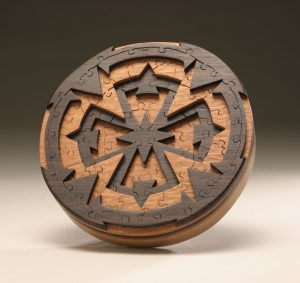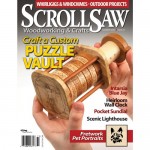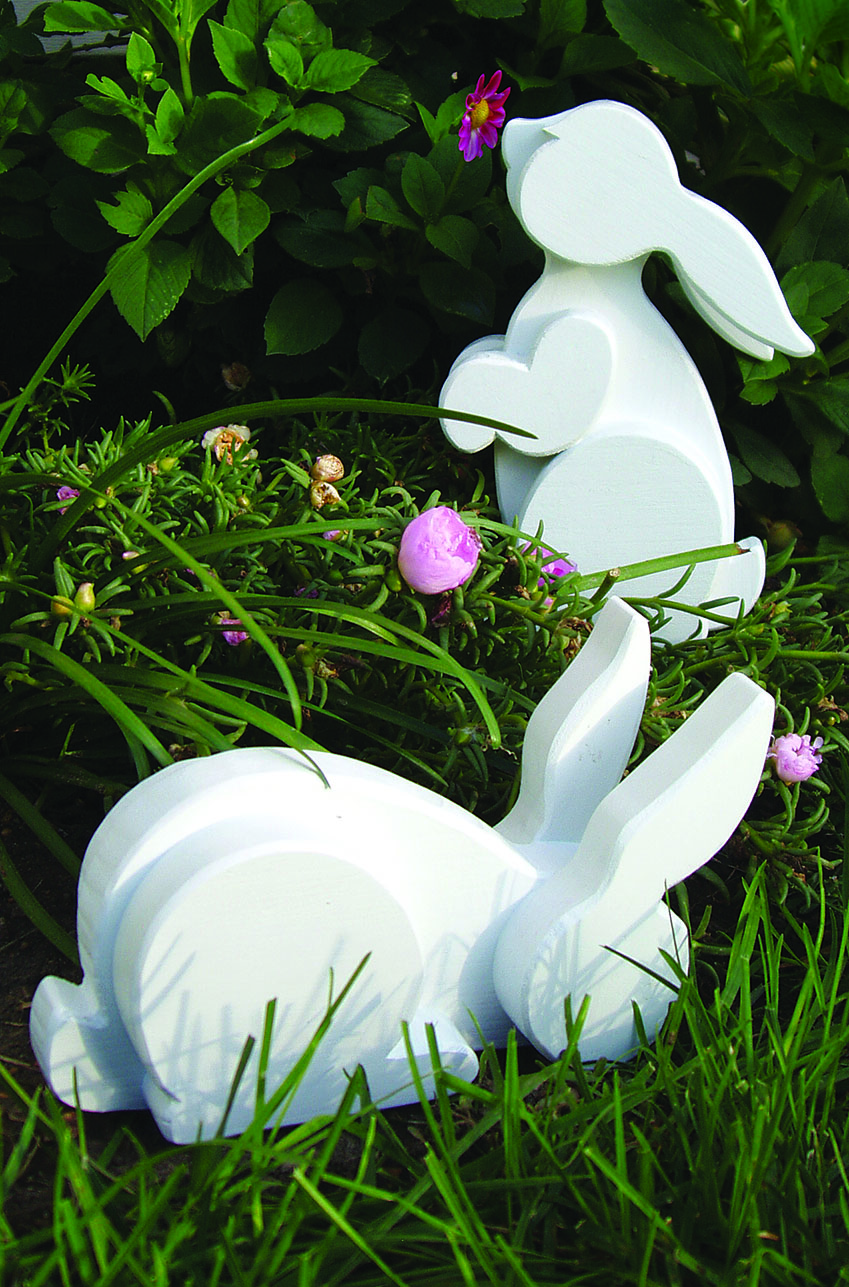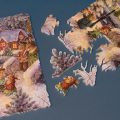By Steve Malavolta
Photography by Pat Berrett
My 26-year interest in woodworking has a lot to do with wood itself. I find it to be a material that contains workable qualities—variations of color, shapability and textile qualities when finished—that compliment the pieces that I make.
My puzzles have evolved over the years. My earlier pieces were only nicely colored and figured slabs of wood, cut into somewhat undefined pieces and then framed out. Currently I am incorporating my previous inlay abilities in a style similar to Intarsia and creating landscapes, abstracts, and 3D architectural puzzles.
All of my woods are hand picked for both consistency of grain, coloration and figuration. These aspects all lead me, as the designer, into creating the individual piece. The inlay work and the piece cutting is done on a scroll saw with a jewelers blade.
I have always incorporated function into my artwork and the puzzles have become very important to me because they allow people to experience not only visual gratification but tactile enjoyment as well. Each puzzle is made with the intent to be played, creating both entertainment and intellectual challenges. I take pleasure in knowing that I have passed these aspects along with each piece.
My goal as a woodworker is to present my puzzles as an enjoyable, playable, piece of heirloom quality artwork. I recommend you practice some of these woodworking techniques and enjoy the pleasures that the process of creating and the use of the finished piece returns to you.
One of the concerns I have in creating a puzzle is the challenge. My puzzles range from single layer entertainment to multi-layered, complicated sculptural challenges.
One of the initial challenges comes form the fact that all the pieces are freehand cut, creating odd and irregular shaped pieces. The next challenge comes from the woods I work with—all naturally colored and 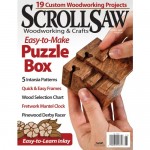 finished hardwoods. Additionally, all pieces are finished on both sides, so the puzzle solver needs to determine which is right side up before deciding where the piece belongs. There is no flipping all the cardboard sides down and all the picture sides up, like you do with the stamped out picture puzzles. I also cut lobes and sockets into the frames of the puzzles, that way there are no straight edges or definable corner pieces.
finished hardwoods. Additionally, all pieces are finished on both sides, so the puzzle solver needs to determine which is right side up before deciding where the piece belongs. There is no flipping all the cardboard sides down and all the picture sides up, like you do with the stamped out picture puzzles. I also cut lobes and sockets into the frames of the puzzles, that way there are no straight edges or definable corner pieces.
If all of this isn’t enough, many of my style puzzles are layered—a concept quite unique to my puzzles. The challenge is compounded when the various layers are made of the same wood, making it possible to assemble part of a layer in the wrong level of the frame. Most people only discover this as they progress further into the puzzle assembly.
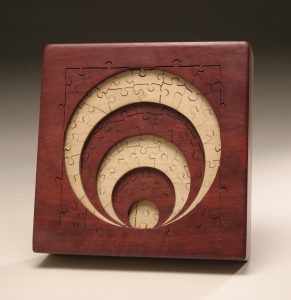 One of my more challenging designs is a puzzle I called the “Layered Rings.” It incorporates all the previous challenges plus the illusion of negative space. The image created is similar to layers of gears or cogs. Every piece and all of the frame cuts have lobes and sockets cut into them, but not every piece is intended to connect into a matching cut, thereby further confusing the matter. This puzzle is recommended only for the serious puzzler.
One of my more challenging designs is a puzzle I called the “Layered Rings.” It incorporates all the previous challenges plus the illusion of negative space. The image created is similar to layers of gears or cogs. Every piece and all of the frame cuts have lobes and sockets cut into them, but not every piece is intended to connect into a matching cut, thereby further confusing the matter. This puzzle is recommended only for the serious puzzler.
I also create one-of-a-kind and limited edition sculptural puzzles. These puzzles are often architectural in form, stacking layers of pieces, creating three-dimensional sculptures mounted onto a base and often housed under a glass case. These puzzles are frequently frameless and held together by buttressing and/or fixed pegging from layer to layer.
To Learn More About Steve’s Puzzle-Making techniques, order a copy of Scroll Saw Workshop Issue #18 which includes an additional 4 pages of coverage.
Marquetry Course | Creating Beautiful Boxes & Inlay Techniques | Intarsia Workbook


